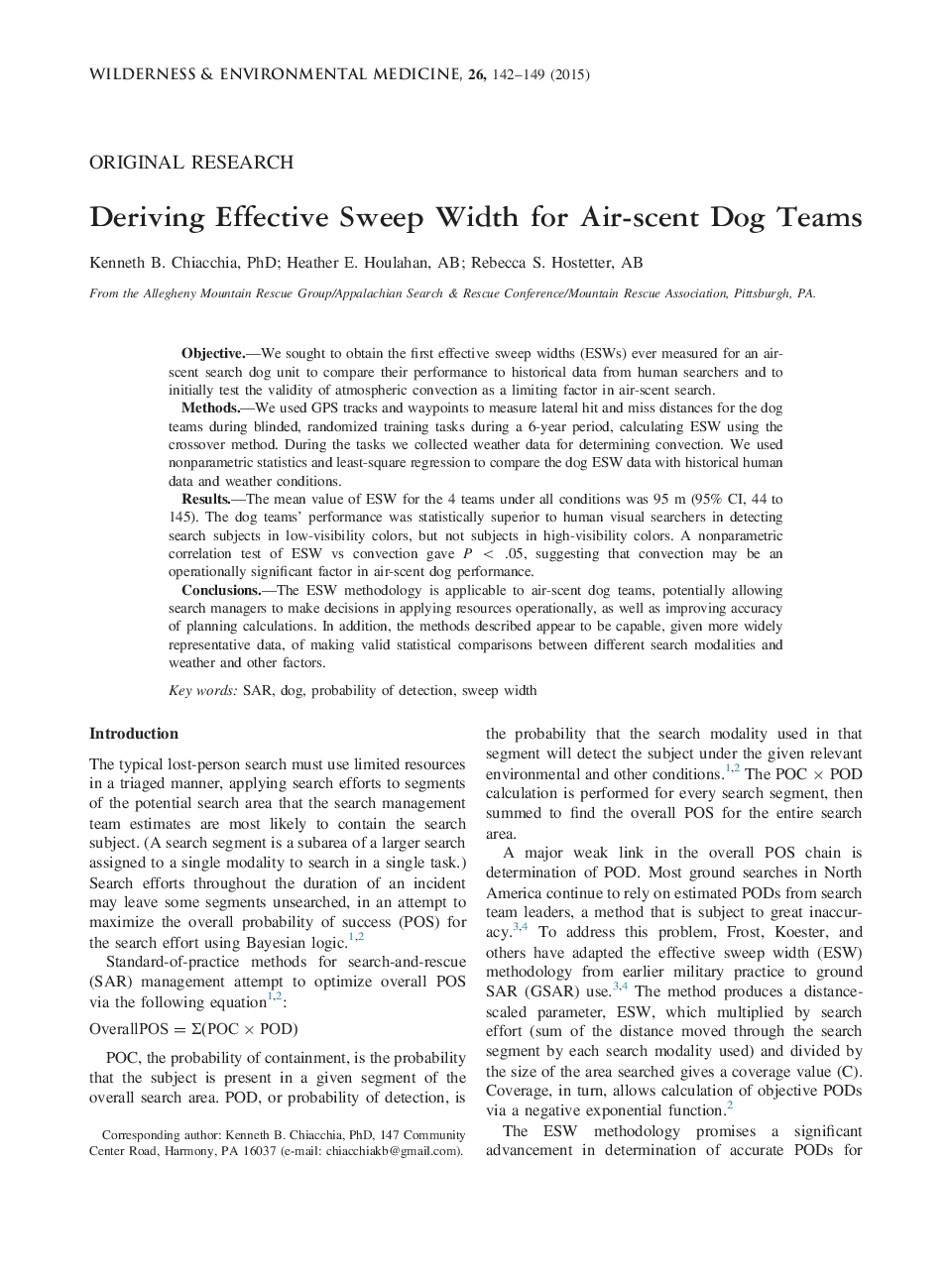| کد مقاله | کد نشریه | سال انتشار | مقاله انگلیسی | نسخه تمام متن |
|---|---|---|---|---|
| 2613432 | 1134882 | 2015 | 8 صفحه PDF | دانلود رایگان |
ObjectiveWe sought to obtain the first effective sweep widths (ESWs) ever measured for an air-scent search dog unit to compare their performance to historical data from human searchers and to initially test the validity of atmospheric convection as a limiting factor in air-scent search.MethodsWe used GPS tracks and waypoints to measure lateral hit and miss distances for the dog teams during blinded, randomized training tasks during a 6-year period, calculating ESW using the crossover method. During the tasks we collected weather data for determining convection. We used nonparametric statistics and least-square regression to compare the dog ESW data with historical human data and weather conditions.ResultsThe mean value of ESW for the 4 teams under all conditions was 95 m (95% CI, 44 to 145). The dog teams’ performance was statistically superior to human visual searchers in detecting search subjects in low-visibility colors, but not subjects in high-visibility colors. A nonparametric correlation test of ESW vs convection gave P < .05, suggesting that convection may be an operationally significant factor in air-scent dog performance.ConclusionsThe ESW methodology is applicable to air-scent dog teams, potentially allowing search managers to make decisions in applying resources operationally, as well as improving accuracy of planning calculations. In addition, the methods described appear to be capable, given more widely representative data, of making valid statistical comparisons between different search modalities and weather and other factors.
Journal: Wilderness & Environmental Medicine - Volume 26, Issue 2, June 2015, Pages 142–149
